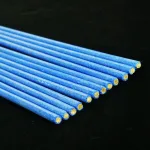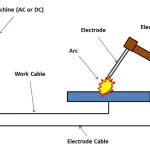Aluminum Mig Welding – A Guide to Mig Welding Aluminum with Tips
When it comes to Mig welding aluminum, a spool gun is often necessary.
Additionally, the arc surrounding the edges of the weld puddle acts as a cleaning agent, breaking up the aluminum oxide and enabling the puddle to adhere to the base metal. Numerous techniques for aluminum Mig welding are effective, but the video uses slow and consistent motion.
For aluminum with a thickness of 1/8″, it is crucial to have the machine properly adjusted. The slow and steady bead method generates excessive heat by the time it reaches the metal’s edge, resulting in a substantial crater.
Another crucial point to note about aluminum Mig welding in the video is the utilization of “spray transfer.” If you observe closely, you will notice that the tip of the wire never enters the puddle. Instead, tiny metal droplets “spray” into the weld.
To determine the voltage and wire feed speed settings for welding, I recommend visiting millerwelds.com and utilizing their weld calculator. Simply choose the process, material type, and thickness. In the case of 1/8″ thick aluminum with a 3/64″ wire, the recommended starting point is a setting of 21 volts and 240 inches per minute.
However, it’s important to note that each welding machine is unique, so further adjustments may be necessary for optimal results. I suggest experimenting with the machine and scrap aluminum to fine-tune the settings.
When it comes to spool gun MIG aluminum welding, spool guns are particularly useful. Aluminum wire is softer than steel and difficult to feed through a long liner typically found in conventional MIG setups (8-10 feet). A spool gun, on the other hand, requires the wire to be fed only a few inches. This makes it more feasible and convenient for soft aluminum wire. Spool guns usually accommodate 1 pound spools.


![Welding vs. Brazing vs. Soldering [ What is the main difference ] 2 Welding vs. Brazing vs. Soldering [ What is the main difference ]](https://www.021208.com/wp-content/uploads/2024/05/welding-1-150x150.jpg)







